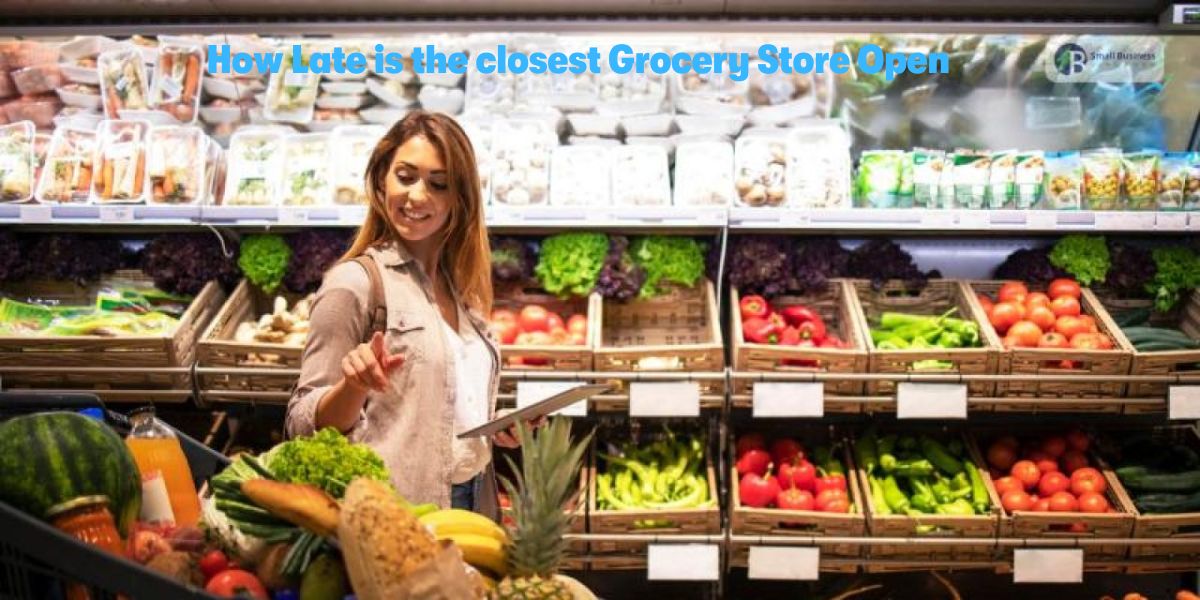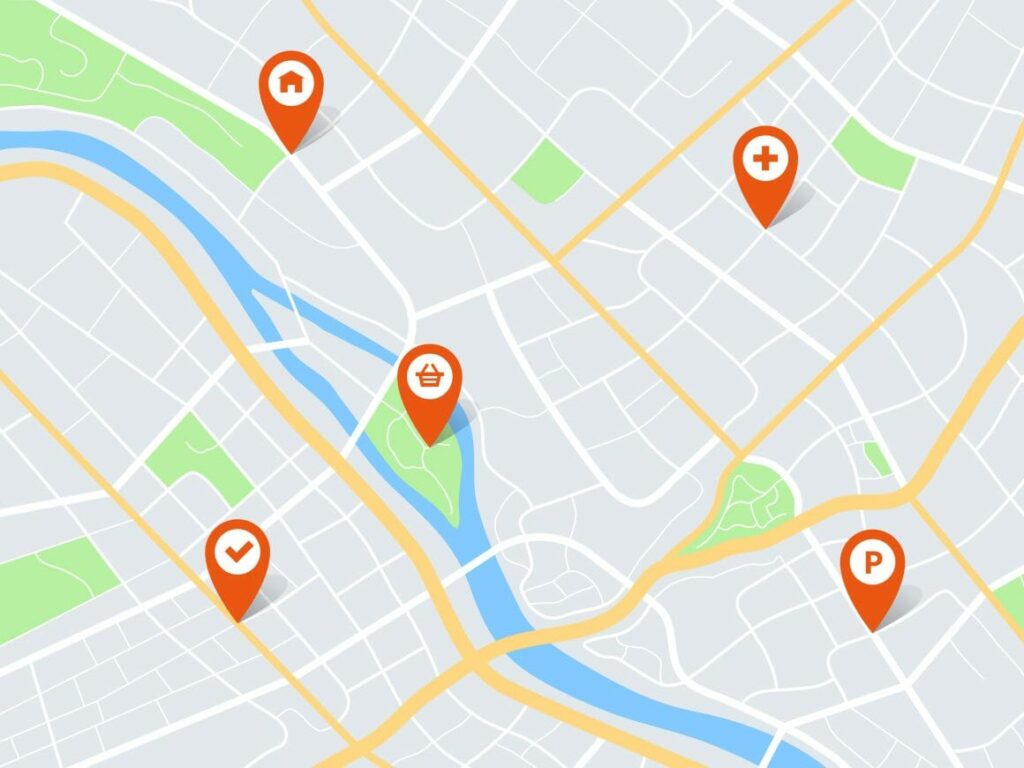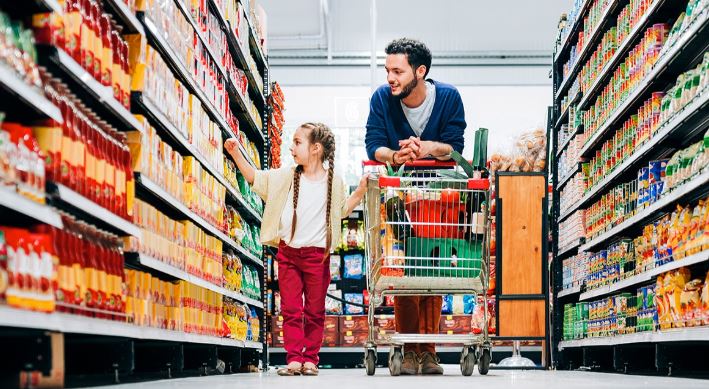Life Style
Navigate to the Nearest Grocery Store: A Comprehensive Guide
Published
4 months agoon
By
James flick
The best ways to navigate to the nearest grocery store, exploring various methods, tips, and technology that make finding groceries easier and more efficient. Whether you’re on foot, driving, or using public transport, this guide has you covered.
Introduction
Navigating to the nearest grocery store is a task most of us undertake regularly, yet it can often be more complicated than it seems. With the rise of technology, there are now countless methods and tools available to help streamline this process. From traditional methods like maps and road signs to modern solutions such as GPS apps and online services, finding your way to a grocery store has never been easier—or more complex. In this comprehensive guide, we will explore the various ways you can efficiently reach your local grocery store, examining both conventional and innovative approaches. Whether you’re walking, driving, or using public transportation, this guide will provide you with all the information you need to make your shopping trip as smooth as possible.
Table of Contents
- Traditional Navigation Methods
- Digital Tools and Apps
- Using GPS and Online Maps
- Public Transportation Options
- Walking and Biking Routes
- Accessibility Considerations
- Safety and Convenience Tips
- Innovative Grocery Delivery Options
- Impact of Location Services
- Environmental Considerations
- Community and Cultural Influences
- FAQs
- Conclusion
Traditional Navigation Methods

Maps and Road Signs
Before the digital age, maps and road signs were the primary tools for navigation. Physical maps provide a comprehensive overview of the area, allowing users to plan routes and identify landmarks. Road signs offer guidance at crucial junctures, helping travelers stay on the right path. Although these methods may seem outdated, they remain reliable options, especially in areas with limited digital connectivity. Maps require a good sense of direction and the ability to read symbols and scales, while road signs necessitate awareness and quick decision-making. Using these traditional methods can enhance your navigational skills and offer a sense of nostalgia.
Asking for Directions
Another traditional method involves asking locals for directions. This approach is particularly useful in unfamiliar areas or when digital tools are unavailable. Engaging with locals can provide insights into shortcuts, traffic conditions, and specific store locations. Moreover, it offers an opportunity to interact with the community and gain cultural insights. When asking for directions, it’s essential to be polite and concise, ensuring clear communication to receive accurate guidance. This method also encourages exploration and curiosity, making the journey to the grocery store an adventure in itself.
Using Landmarks
Navigating using landmarks is a time-tested method that relies on the visual identification of prominent features in the landscape. Landmarks such as tall buildings, statues, and natural formations serve as reference points that guide travelers along their route. This method is especially useful in areas with unique or easily recognizable landmarks. It requires keen observation skills and an understanding of the local geography. By using landmarks, you can create a mental map of the area, allowing for more intuitive navigation and reducing the reliance on external tools.
Digital Tools and Apps
Navigation Apps
With the advent of smartphones, navigation apps have revolutionized how we find our way to destinations, including grocery stores. Apps like Google Maps, Apple Maps, and Waze offer real-time navigation with step-by-step directions, traffic updates, and estimated arrival times. These apps are equipped with voice-guided navigation, ensuring hands-free operation while driving. They also allow users to search for specific store locations, providing detailed information on hours of operation and customer reviews. Navigation apps have become indispensable tools for modern travelers, offering convenience and efficiency in reaching any destination.
Grocery Store Locators
Many grocery store chains offer dedicated store locator tools on their websites or mobile apps. These locators enable users to find the nearest store based on their current location or a specified address. They provide detailed information, including store hours, contact numbers, and available services. Store locators often include features like virtual store tours and shopping list integration, enhancing the overall shopping experience. By using these tools, customers can plan their trips more effectively, ensuring they visit the right store with the desired products and services.
Virtual Assistants
Virtual assistants like Siri, Google Assistant, and Amazon Alexa can help users navigate to grocery stores using voice commands. These assistants integrate with navigation apps to provide hands-free directions, making the journey safer and more convenient. By simply asking for directions to the nearest grocery store, users can receive real-time updates and guidance. Virtual assistants also offer the ability to set reminders, check store hours, and even place online grocery orders. Their integration with smart home devices further enhances the shopping experience, providing a seamless blend of convenience and technology.
Using GPS and Online Maps
Advantages of GPS
Global Positioning System (GPS) technology has transformed navigation by providing accurate location data and real-time tracking. GPS devices and smartphone apps offer detailed maps, route planning, and turn-by-turn directions, ensuring efficient navigation to grocery stores. The advantages of GPS include the ability to avoid traffic congestion, find alternative routes, and receive estimated arrival times. Additionally, GPS technology can work offline with pre-downloaded maps, making it a reliable option in areas with limited internet connectivity. Its precision and ease of use make GPS an essential tool for modern navigation.
Online Mapping Services
Online mapping services like Google Maps and Bing Maps offer comprehensive navigation solutions with a wide range of features. These services provide detailed maps with satellite imagery, street views, and public transportation options. Users can search for specific locations, view real-time traffic conditions, and explore points of interest. Online maps also allow for route customization, enabling users to select preferred modes of transportation and avoid toll roads or highways. With continuous updates and improvements, online mapping services remain at the forefront of digital navigation, offering convenience and accuracy.
Integration with Vehicles
Many modern vehicles come equipped with integrated navigation systems that utilize GPS and online mapping services. These systems offer in-dash displays with voice-guided navigation, ensuring a safe and convenient driving experience. Vehicle navigation systems often include features like traffic alerts, weather updates, and route optimization, enhancing the overall journey. Integration with smartphone apps allows for seamless transitions between devices, ensuring continuity in navigation. By using integrated vehicle systems, drivers can enjoy a hands-free, immersive navigation experience that prioritizes safety and efficiency.
Public Transportation Options
Bus Routes
Public transportation offers an eco-friendly and cost-effective option for navigating to grocery stores. Bus routes are widely available in urban areas, providing reliable access to various destinations. Many cities offer real-time bus tracking through mobile apps and digital displays at bus stops, ensuring accurate arrival times and route information. When using bus routes, it’s essential to plan ahead, considering factors like schedules, transfer points, and fare options. Public transportation encourages a sustainable lifestyle and reduces the reliance on personal vehicles, contributing to a healthier environment.
Train and Subway Systems
Trains and subways provide efficient transportation options in metropolitan areas, offering fast and reliable access to grocery stores and other destinations. These systems often feature extensive networks with frequent service, making them a popular choice for urban dwellers. Real-time updates, route maps, and ticketing information are available through mobile apps and station displays, enhancing the user experience. When using trains and subways, it’s important to be aware of peak hours, station layouts, and fare policies. This mode of transportation promotes sustainability and reduces the carbon footprint, aligning with environmentally conscious values.
Ride-Sharing Services
Ride-sharing services like Uber and Lyft offer convenient alternatives to traditional public transportation, providing door-to-door service to grocery stores. These services utilize smartphone apps for booking, tracking, and payment, ensuring a seamless user experience. Ride-sharing offers flexibility in terms of scheduling and route preferences, making it a popular choice for those seeking convenience and comfort. Additionally, ride-sharing can be more economical than owning a personal vehicle, eliminating expenses like parking, maintenance, and insurance. By choosing ride-sharing, users can enjoy a personalized transportation experience that prioritizes efficiency and convenience.
Walking and Biking Routes

Benefits of Walking
Walking to the grocery store offers numerous health and environmental benefits, promoting physical activity and reducing carbon emissions. This mode of transportation encourages a mindful approach to shopping, allowing individuals to engage with their surroundings and enjoy the journey. Walking routes can be planned using online maps and navigation apps, ensuring a safe and efficient path to the store. By choosing to walk, individuals contribute to a healthier lifestyle and a more sustainable community, aligning with modern values of wellness and environmental responsibility.
Exploring Biking Options
Biking provides an eco-friendly and efficient mode of transportation for navigating to grocery stores, especially in urban areas with dedicated bike lanes and paths. Cycling offers a blend of physical activity and convenience, allowing individuals to cover longer distances in a shorter time compared to walking. Bike-sharing programs and rental services have made cycling more accessible, providing affordable options for short trips. When biking to the grocery store, it’s important to consider safety measures like wearing helmets, using reflective gear, and following traffic regulations. By embracing biking, individuals can enjoy a sustainable and enjoyable transportation experience.
Planning Safe Routes
Safety is a crucial consideration when walking or biking to the grocery store. Planning safe routes involves selecting paths with minimal traffic, adequate lighting, and pedestrian or bike-friendly infrastructure. Online maps and navigation apps can assist in identifying safe routes, offering features like traffic alerts and crime reports. Additionally, it’s important to be aware of weather conditions and carry essential items like water, identification, and emergency contact information. By prioritizing safety, individuals can enjoy a stress-free journey to the grocery store, enhancing the overall experience.
Accessibility Considerations
Accommodating Disabilities
Navigating to grocery stores should be accessible to everyone, including individuals with disabilities. Accessibility considerations involve providing accommodations like wheelchair ramps, tactile paving, and auditory signals at intersections. Grocery stores can enhance accessibility by offering services like online ordering, curbside pickup, and delivery options. Navigation apps with accessibility features, such as voice guidance and screen readers, ensure that individuals with disabilities can navigate independently. By prioritizing accessibility, communities can create inclusive environments that cater to the needs of all individuals, promoting equality and independence.
Navigating with Assistive Devices
Assistive devices like mobility scooters, canes, and guide dogs play a crucial role in helping individuals with disabilities navigate to grocery stores. These devices enhance mobility and independence, allowing individuals to travel safely and confidently. Navigation apps with assistive technology integration provide features like step-free route planning and voice-guided directions, ensuring a seamless experience. It’s important for communities to support individuals using assistive devices by providing accessible infrastructure and services. By fostering an inclusive environment, individuals with disabilities can enjoy equal opportunities for grocery shopping and other activities.
Enhancing Store Accessibility
Grocery stores can enhance accessibility by implementing features like wide aisles, accessible checkout counters, and braille signage. Providing assistance services, such as personal shoppers or staff trained in disability awareness, ensures that all customers receive the support they need. Online ordering and delivery options offer additional convenience for individuals with mobility challenges. By prioritizing accessibility, grocery stores can create welcoming environments that cater to diverse customer needs, promoting inclusivity and customer satisfaction.
Safety and Convenience Tips
Traveling at Safe Times
Safety is a paramount consideration when navigating to grocery stores, particularly in urban areas. Traveling during daylight hours and avoiding isolated areas can enhance personal safety. Being aware of surroundings and staying alert to potential hazards is crucial. Using well-lit paths and populated areas reduces the risk of encountering unsafe situations. By prioritizing safety, individuals can enjoy a worry-free journey to the grocery store, ensuring a positive shopping experience.
Avoiding Busy Traffic
Navigating to grocery stores during peak traffic hours can be challenging and time-consuming. Planning trips during off-peak hours reduces the likelihood of encountering heavy traffic and crowded stores. Utilizing navigation apps with real-time traffic updates helps identify the best times to travel, ensuring a smooth journey. By avoiding busy traffic, individuals can save time and reduce stress, making the shopping trip more efficient and enjoyable.
Preparing for Emergencies
Being prepared for emergencies is essential when navigating to grocery stores. Carrying a charged phone, identification, and emergency contact information ensures readiness in case of unexpected situations. Packing essentials like water, snacks, and a basic first aid kit provides added security during the journey. Familiarizing oneself with the area and identifying nearby emergency services, such as hospitals and police stations, enhances safety. By preparing for emergencies, individuals can navigate to grocery stores with confidence and peace of mind.
Innovative Grocery Delivery Options
Online Grocery Shopping
The rise of online grocery shopping has transformed how consumers access groceries, offering convenience and flexibility. Online platforms allow users to browse products, compare prices, and place orders from the comfort of their homes. Delivery services provide scheduled and on-demand options, ensuring timely access to fresh groceries. By choosing online grocery shopping, individuals can save time and avoid the hassle of navigating to physical stores, enjoying a seamless and efficient shopping experience.
Curbside Pickup Services
Curbside pickup services offer a convenient alternative to traditional grocery shopping, allowing customers to place orders online and collect them from designated pickup areas. This option combines the benefits of online shopping with the immediacy of in-store shopping, providing a flexible solution for busy individuals. Curbside pickup reduces the need for in-store browsing, minimizing exposure to crowded environments. By utilizing curbside pickup services, customers can enjoy a streamlined shopping experience that prioritizes convenience and safety.
Exploring Subscription Services
Grocery subscription services offer a unique approach to accessing groceries, providing regular deliveries of pre-selected or customizable items. These services often focus on specific categories, such as fresh produce, organic products, or specialty foods. Subscription services provide convenience and consistency, ensuring a steady supply of groceries without the need for frequent store visits. By exploring subscription options, individuals can enjoy a tailored grocery experience that aligns with their preferences and lifestyle.
Impact of Location Services
Privacy Considerations
While location services offer convenience in navigating to grocery stores, they also raise privacy concerns. Many apps and devices collect location data, which can be used for targeted advertising or shared with third parties. It’s important to be aware of privacy settings and permissions, ensuring that personal data is protected. Choosing apps and services with transparent privacy policies and robust security measures enhances privacy. By prioritizing data protection, individuals can enjoy the benefits of location services while safeguarding their personal information.
Customizing Location Settings
Customizing location settings allows individuals to control how their data is used and shared. Most smartphones and apps offer options to enable or disable location services, select specific apps that can access location data, and set location preferences. By customizing these settings, users can balance convenience and privacy, ensuring that location data is used appropriately. Regularly reviewing and updating location settings helps maintain control over personal information, promoting a secure digital experience.
Balancing Convenience and Security
Finding the right balance between convenience and security is essential when using location services. While these services offer valuable navigation tools, it’s important to remain vigilant about potential security risks. Using trusted apps, enabling two-factor authentication, and staying informed about security updates are key practices for maintaining security. By balancing convenience and security, individuals can navigate to grocery stores with confidence, enjoying the benefits of technology without compromising personal safety.
Environmental Considerations
Reducing Carbon Footprint
Navigating to grocery stores with environmental considerations in mind can contribute to a sustainable lifestyle. Choosing eco-friendly transportation options, such as walking, biking, or using public transportation, reduces carbon emissions and promotes environmental responsibility. Additionally, planning efficient routes and combining trips can minimize fuel consumption and decrease the overall carbon footprint. By adopting environmentally conscious practices, individuals can support a healthier planet while accessing essential groceries.
Supporting Sustainable Stores
Supporting grocery stores that prioritize sustainability can further enhance environmental responsibility. Many stores offer eco-friendly products, reduce packaging waste, and implement energy-efficient practices. Choosing to shop at sustainable stores encourages businesses to adopt green initiatives and promotes a culture of environmental awareness. By supporting sustainable practices, individuals can make informed choices that align with their values and contribute to positive environmental impact.
Exploring Green Technology
Green technology offers innovative solutions for reducing environmental impact when navigating to grocery stores. Electric vehicles, solar-powered navigation devices, and energy-efficient transportation options provide eco-friendly alternatives to traditional methods. Green technology reduces reliance on fossil fuels and supports a sustainable future. By exploring and adopting green technology, individuals can enjoy the benefits of modern navigation while minimizing their environmental footprint.
Community and Cultural Influences
Understanding Local Cultures
Navigating to grocery stores offers opportunities to engage with local cultures and communities. Understanding cultural influences on grocery shopping, such as regional cuisines, dietary preferences, and shopping habits, enhances the overall experience. Engaging with local markets and exploring diverse products provides insights into cultural traditions and values. By embracing cultural diversity, individuals can enrich their grocery shopping experience and foster connections with the community.
Supporting Local Businesses
Supporting local grocery stores and markets contributes to community development and economic growth. Local businesses often offer unique products, personalized service, and a sense of community connection. Choosing to shop locally fosters economic resilience and supports local farmers and producers. By prioritizing local businesses, individuals can strengthen community ties and enjoy a personalized shopping experience that reflects local culture and values.
Engaging with Community Initiatives
Community initiatives, such as farmers’ markets, co-ops, and food sharing programs, provide opportunities for individuals to engage with their communities and access fresh groceries. These initiatives promote sustainability, support local producers, and foster community collaboration. Participating in community initiatives enhances the grocery shopping experience and encourages social connections. By engaging with these initiatives, individuals can contribute to community well-being and enjoy a sense of belonging.
FAQs
What are the best apps for navigating to grocery stores?
There are several apps that excel in helping users navigate to grocery stores. Google Maps is a top choice due to its comprehensive mapping, real-time traffic updates, and integration with various transportation modes. Waze offers crowd-sourced traffic information and alternative routes to avoid congestion. Apple Maps provides a user-friendly interface with detailed navigation features. Additionally, grocery store apps often have built-in store locators to help you find the nearest location easily.
How can I find the nearest grocery store without using a smartphone?
If you don’t have access to a smartphone, you can use traditional methods such as physical maps and road signs to find the nearest grocery store. Asking locals for directions is another effective way to locate stores. You can also consult public transportation maps and schedules if you prefer to take a bus or train. Many communities provide printed directories or visitor guides with information about local stores and services.
What are the benefits of using public transportation to reach grocery stores?
Using public transportation to reach grocery stores offers several benefits. It is an eco-friendly option that reduces your carbon footprint compared to driving a personal vehicle. Public transportation can also be more cost-effective, eliminating expenses such as parking fees and fuel costs. Additionally, it encourages the use of sustainable travel methods and supports the development of efficient transit systems in urban areas. By choosing public transportation, you contribute to a healthier environment and enjoy a convenient way to access groceries.
How can I ensure safety when walking or biking to grocery stores?
Safety is a top priority when walking or biking to grocery stores. Plan your route using online maps or navigation apps, selecting paths with dedicated pedestrian or bike lanes and good lighting. Wear reflective clothing and use lights on your bike to increase visibility, especially during low-light conditions. Follow traffic rules, such as obeying signals and using crosswalks, to ensure a safe journey. Carry a charged phone and emergency contact information for added security.
What features should I look for in navigation apps for grocery shopping?
When choosing navigation apps for grocery shopping, consider features such as real-time traffic updates, multiple transportation mode options, and route customization. Look for apps that offer offline maps in case you lose internet connectivity. Integration with ride-sharing services can be useful for seamless travel to the store. Additionally, apps with location-based notifications, such as nearby sales or discounts, can enhance your shopping experience by providing timely information.
How can I find grocery stores with specific products or brands?
To find grocery stores with specific products or brands, use online platforms and store websites that allow you to search for items by category or brand. Many grocery chains have mobile apps that let you check product availability and prices at different locations. You can also contact store customer service to inquire about specific products. Consider joining online forums and community groups where members share information about product availability and store recommendations.
Conclusion
Navigating to the nearest grocery store involves a combination of planning, technology, and personal preferences. By considering factors such as transportation options, accessibility, safety, and environmental impact, individuals can choose the most suitable method for reaching grocery stores. The integration of innovative technology, such as navigation apps and green transportation options, enhances convenience and efficiency. Supporting local businesses and engaging with community initiatives fosters a sense of belonging and contributes to community well-being. Ultimately, the journey to the grocery store is an opportunity to embrace diverse experiences and make informed choices that align with personal values and lifestyle.
